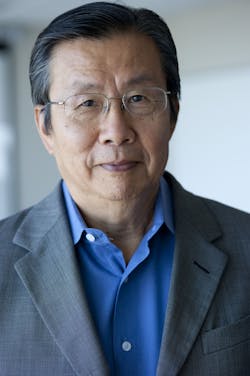
Q: I plan to exhibit at CLEO and would like to find investors and also business partners in the United States. Being unfamiliar with the ways of your country, what strategy should I follow to carry on an efficient discussion; should we meet at the exhibition hall, hotels, or their booth?
A: Seeing a product demonstration in a booth seems to make sense. But the booth is not a good place to carry on an extensive discussion since there are constant interruptions. It is better to meet outside, and a willingness to meet can be a good indication of the level of interest. People in the United States generally do not like to meet in hotel rooms unless it is a hospitality suite. Meeting in restaurants is customary and provides a nice ambience to ease into negotiations. What is important is the preparation in advance of the conference. It takes many meetings before discussions get serious, and without advance notice people may well brush you aside because they are busy with their own customers on the exhibition floor.
For any deals to happen, you must first understand what's important to the people you are dealing with and what they want. For example, until you can clearly figure out how investors could get a high return on their investment, you are not likely to get them interested. Very few U.S. venture-capital firms invest overseas except in a few hot spots because of the way partnerships are structured and the complex tax laws relating to overseas investments. And, in the case of potential partners, they must understand the fit with your products, the distribution channel, and also the profit margins you can afford to make it a profitable arrangement.
Q:There is not enough time in a day to deal with customers and run the company, and I can't afford to hire a senior executive. How do I avoid burnout?
A: The simple answer is to practice better time management. But going a step further, you are setting yourself up for burnout, like the old saying, "we do it to ourselves." So you may want to contemplate changing your attitude about the way you manage. Let us also examine the business implications.
There are many articles and books on time management. The key is to be your own master instead of being driven by events and reacting to other people's agendas. That means knowing what you want and don't want to do, and being willing to let go of things that are, in the final analysis, unimportant. You also have to be decisive in dealing with anything that comes to you instead of postponing decisions. Otherwise, you have to think again and again about a matter or you shuffle the same piece of paper over an over again.
What you are experiencing is very common to entrepreneurs. They feel the need to be in control in order to have things go right. They run out of time by making all the decisions, and they also create a vicious cycle because people around them won't learn how to make decisions, and therefore everything flows to the top—taking up more time. The only way change can occur is to grow and nurture the people working for you, to enable them to make progressively more important decisions and be able to deal with customers with authority. Otherwise, why shouldn't customers come to the boss for more immediate answers?
From a growing-the-business standpoint, what you are doing is self-limiting because you will eventually run out of "bandwidth." In growing a business, you need resources—people and money. You can, of course, keep it a small cozy company you control, or get funding and hire people who can carry the company to new heights. In the end, you will not have created much value if the company is not a self-sustaining entity.
About the Author
Milton Chang
MILTON CHANG of Incubic Management was president of Newport and New Focus. He is currently director of mBio Diagnostics and Aurrion; a trustee of Caltech; a member of the SEC Advisory Committee on Small and Emerging Companies; and serves on advisory boards and mentors entrepreneurs. Chang is a Fellow of IEEE, OSA, and LIA. Direct your business, management, and career questions to him at [email protected], and check out his book Toward Entrepreneurship at www.miltonchang.com.
